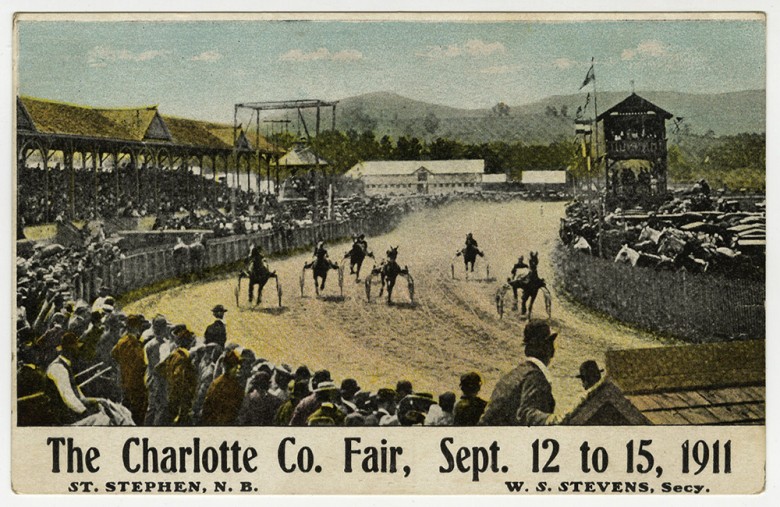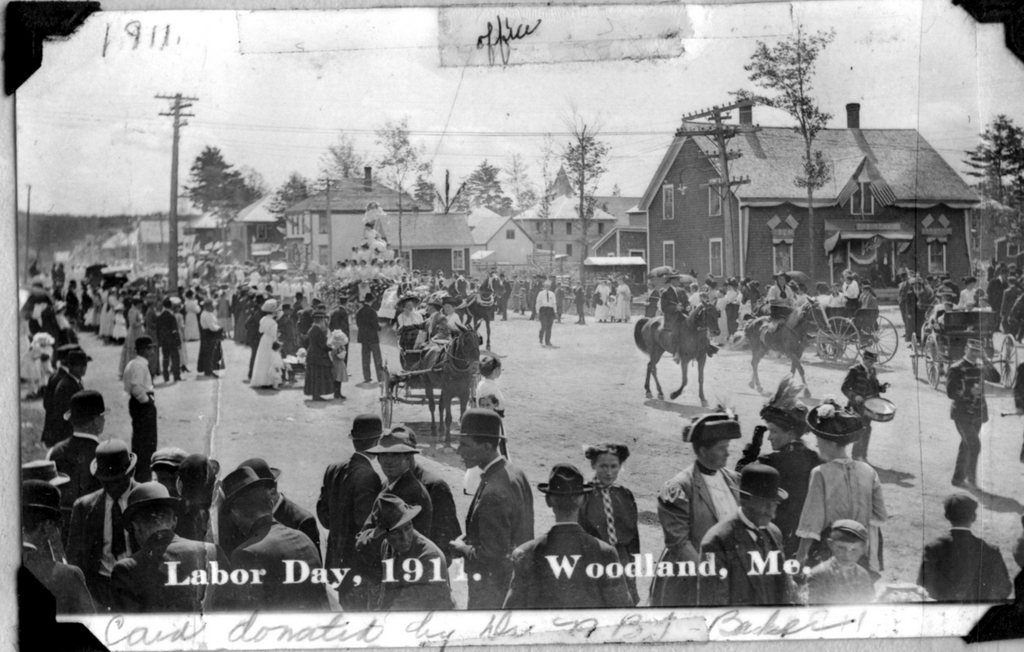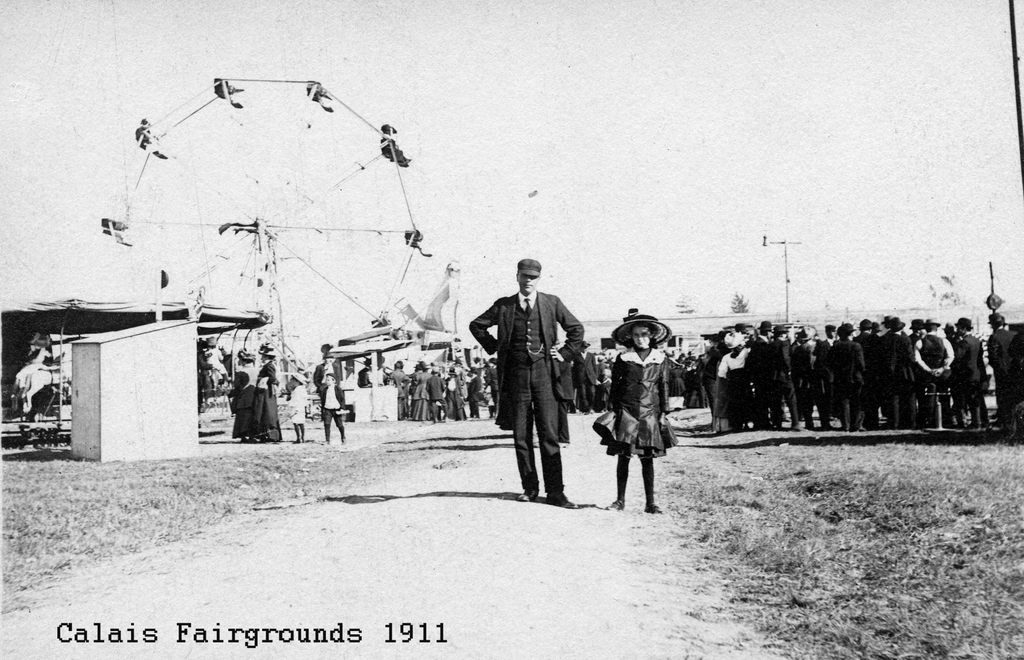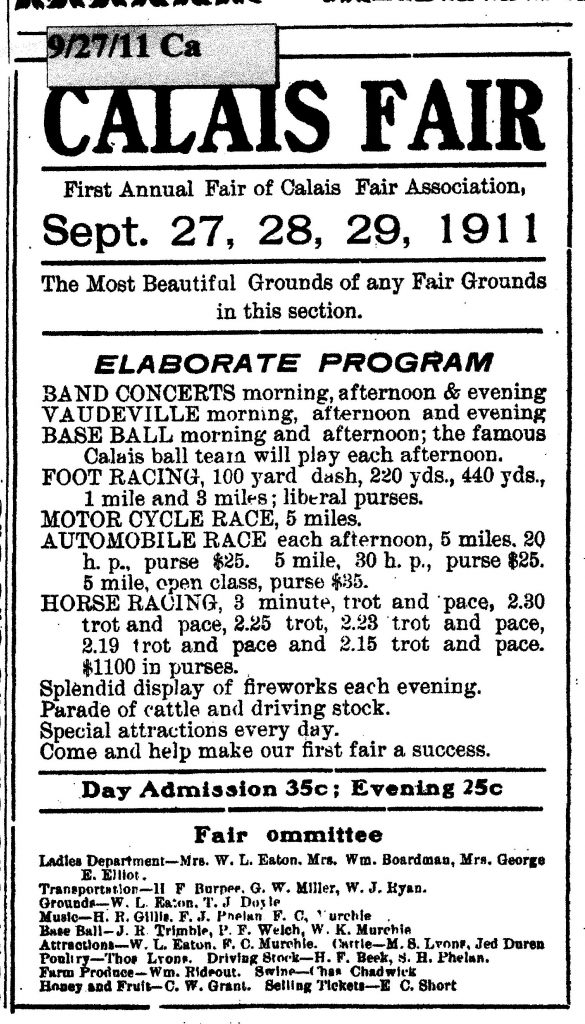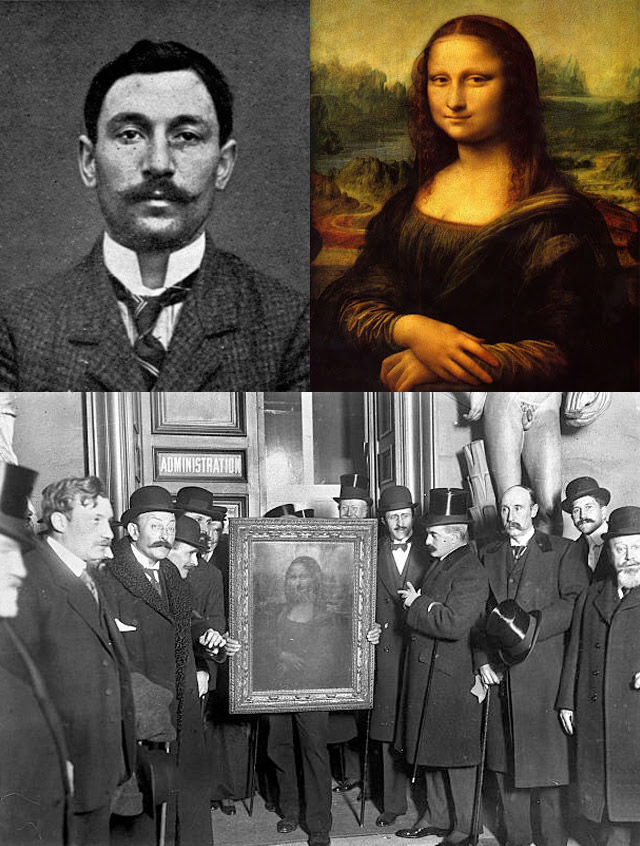
One of the most sensational stories in 1911 was the theft of the Mona Lisa from the Louvre in Paris. Adding to the sensation resulting from the loss of this iconic painting was the identity of one the main suspects – Pablo Picasso who, it was established, had purchased two sculptures stolen from the Louvre a few years earlier. When this came to light and he came under suspicion, Picasso packed the sculptures in a suitcase intending to throw them into the Seine, but, art lover that he was, Picasso was unable to destroy the works and they were handed over to the police. Two years later the true thief was discovered to be a patriotic Italian workman who wanted the historic painting returned to Florence, Italy where it had been painted by Da Vinci four centuries earlier.
In other world news of 1911 a European War nearly broke over the issue of Morocco, but a settlement was reached at the 11th hour. This only postponed the inevitable; no one doubted war was on the horizon although most thought it couldn’t last more than a few months. In the Americas war did break out and it was a short one. The U.S. sent troops to assist in the overthrow of the government of Honduras which had become unsympathetic to U.S. business interests. Two thousand U.S. troops were also dispatched to the Mexican border as our neighbors to the South became increasingly obstreperous. The first airplane landed on the deck of a ship—the USS Pennsylvania, Omar Bradley entered West Point and the Titanic was launched. Ground was broken in 1911 for a new ballpark in Boston to be called Fenway Park and the first Marconi signal arrived in New York from Italy. Sun Yat-sen, the father of modern China, became its first president.
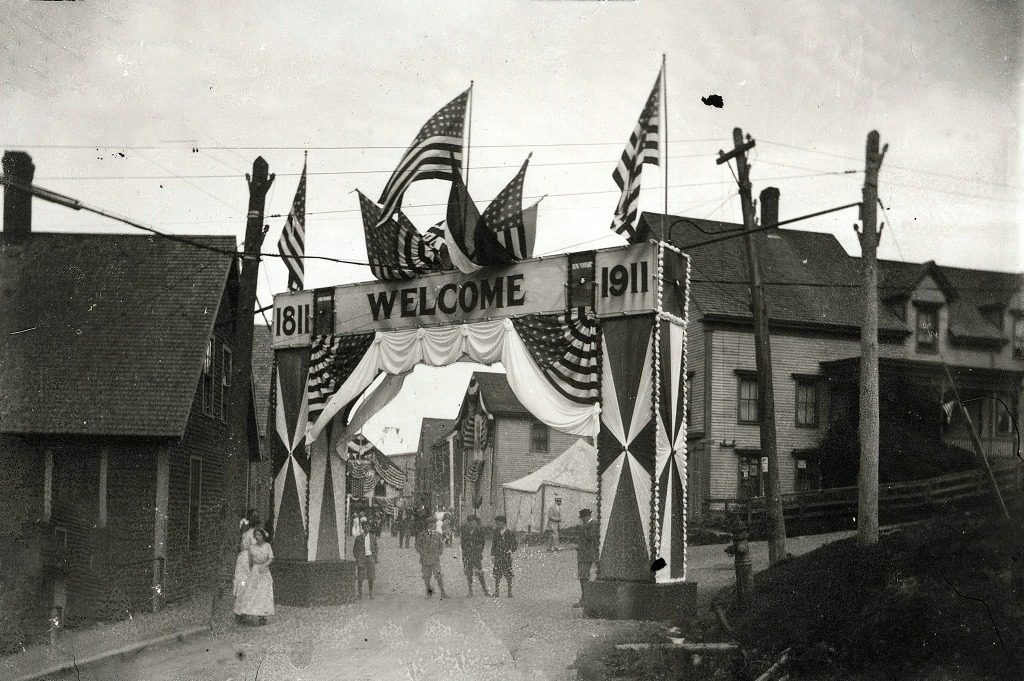
Locally, both Lubec and Robbinston celebrated their Centennials in 1911.
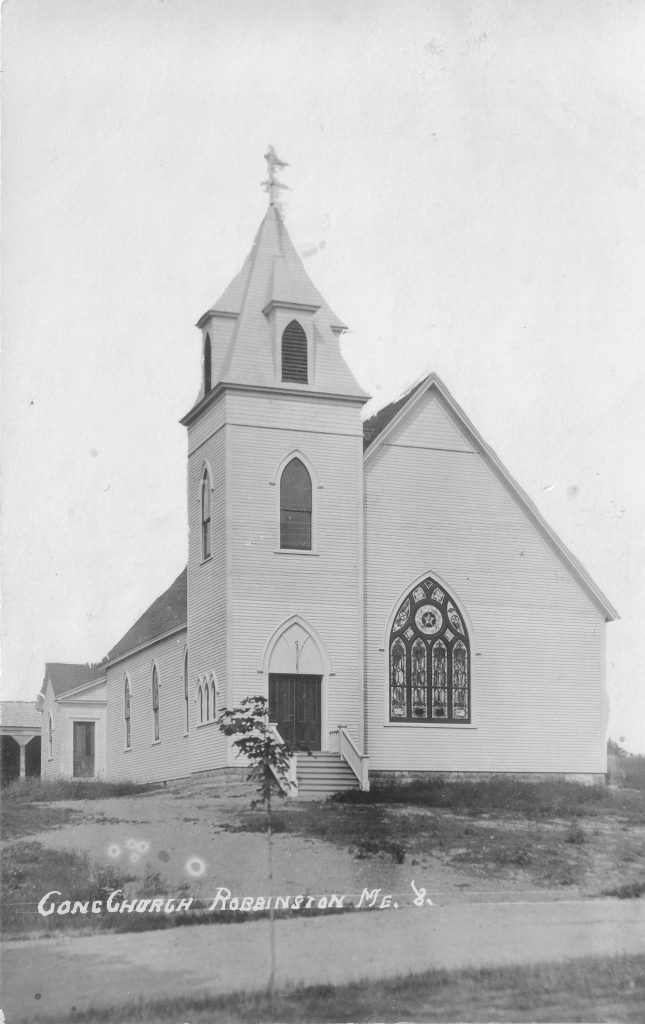
Robbinston also celebrated the construction and dedication of the new Congregational Church which had been built less than a year after the old church had burned. The new church still stands and services continue to be held on Sundays.
Some of the Robbinston celebrations may have gotten a bit out of hand as evidenced by the August 1911 municipal court docket in Calais. From the Advertiser:
Robbinston Fracas
In the Municipal Court, Calais, August 23rd 1911
The first case to be tried was that of Mrs. Lavinia Fisher who was charged by the State with assault and battery on the person of Mrs. Bertha Morrison. Numerous witnesses were heard and the respondent was found guilty and fined $5 and costs. The other three cases, namely Mrs. Lavinia Fisher charged with assault and battery on her daughter in law, Mrs. Bertha Fisher; Mrs. Maud Kaler, charged with assault and battery on Mrs. Bertha Morrison and Miss Susie Fisher, charged with assault and battery of Mrs. Bertha Morrison waived examination and were each fined $1.00 and costs.
The cause of this “Fracas” is unknown although all of the defendants and victims were from established Robbinston families and now rest together in Robbinston cemeteries. If either Bertha had had a dime they could have called Calais for assistance. In 1911 New England Telephone “established a uniform rate of 10 cents for each five minutes or fraction thereof for calls between Calais and Robbinston, Charlotte-Meddybemps and Princeton.” However, person to person calls were not allowed and “The caller will retain the receiver at his ear until an answer comes from the called station..” Apparently folks were going to the barn to milk the cows while the connection was being made.
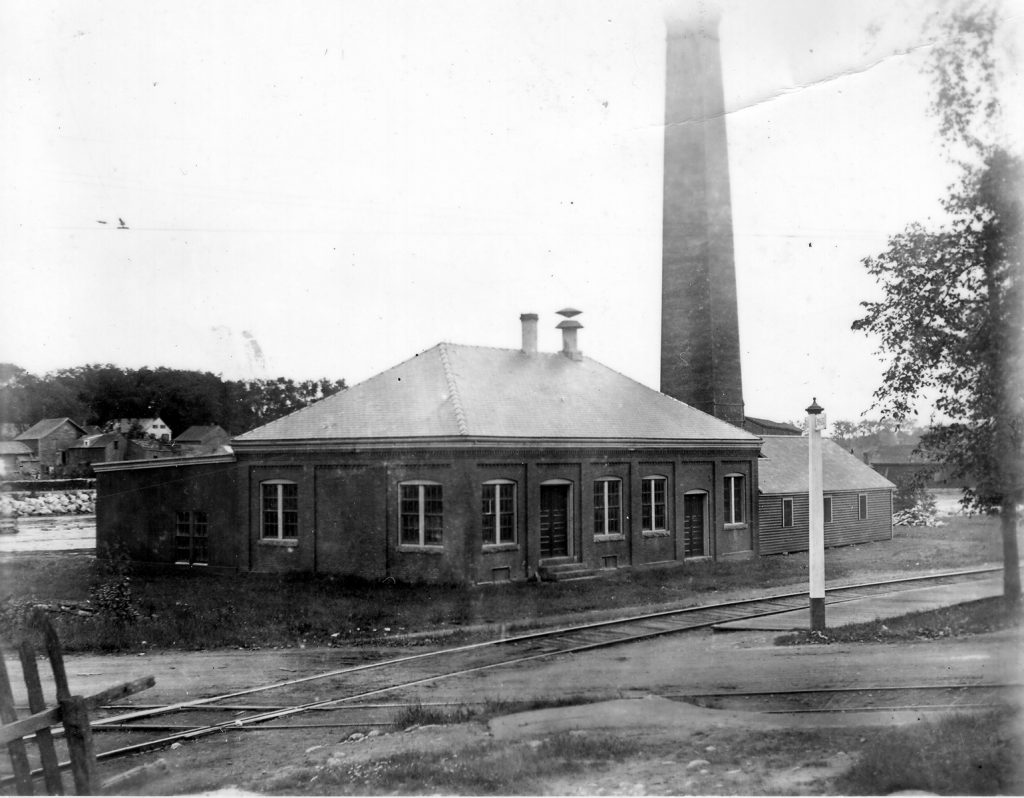
Some may recognize the building above, now without its distinctive smokestack. It is the Calais Water Company building across the street from the Milltown Bridge. For many decades water was taken from the river here and pumped to the residents of Calais and Milltown until, in 1911, the good citizens of Calais could no longer stand the taste of the water. The problem was to be found a few miles upriver where the Woodland mill was dumping chemicals and all manner of pollutants into the St. Croix. Something had to be done and the solution to the problem was found across the river in Canada. Many national newspapers in 1911 found the solution intriguing and perhaps reckless.
Pittsburg Post December 16, 1911:
CITY IMPORTS ITS WATER. Calais Maine formerly drew its water supply from the St. Croix river at the little town of Milltown some distance above the city, but the quality of the water at the intake became contaminated by the waste poured into the river 12 miles above, where are situated huge wood pulp and paper plants. Various fresh sources of a pure and sufficient supply were sought for without success, there being none in United States territory near enough to Calais to be available. Just at this time the Canadian city of St. Stephen decided to install a municipal water system and tapped a great spring of pure water that seemed to be inexhaustible.
One rainless summer, when no drop of rain fell for five long months, this spring furnished 2.000,000 gallons of water daily, and the Calais folk across the river in Uncle Sam’s territory looked upon their Canadian neighbors with envious eyes. The temptation proved too great and a deal was made with a newly organized company to take water from across the Canadian border and deliver it into the pipes of the United States city of Calais. So ever since British water has flowed into this municipality, and it is the only water that the city has for drinking, manufacturing or fire protection. Just what would happen should there ever be ill feeling between the two nations is a problem the Calais people have not yet contemplated. Should the British Province of New Brunswick in which St. Stephen is situated decide to make Calais uninhabitable it could readily be done by shutting off the water. The engine of destruction thus put in the control of a foreign nation is much more deadly than any park of artillery would be.
It would seem nothing of the sort is anticipated, for at the recent special election in Maine to determine whether the amendment to the State constitution prohibiting the sale of liquor should remain in that document, Calais was the only city in the whole State which voted in favor of continued prohibition; every other Maine municipality voted against It. From this observers deduce that Calais is satisfied to buy her liquor across the border, where it is cheaper than in the United States and voted accordingly. It appears that the Calais folk esteem the quality of Canadian whisky quite as much as that of Canadian water and that they expect to enjoy both fluids in proper proportion for indefinite years to come.
In another 1911 development regarding the St. Croix, the March 1st Calais Advertiser contained an article announcing the good news that the Federal Government had appropriated $75000 to dredge the St. Croix River which had become clogged with sawdust and debris from the mills above Ferry Point. There were conditions. The mill owners on both sides of the border had to agree to cease dumping their waste into the river in the future. The Canadian Government was “glad to give assurances that the mills on the Canadian side of the river will not be permitted to allow refuse to pass into the stream” but no such assurances came from the Eatons, Murchies and other mill owners on the U.S. side. As a result, the government used the funds to dredge the harbor in Lubec and the St Croix today near the bridge remains too shallow for many vessels.
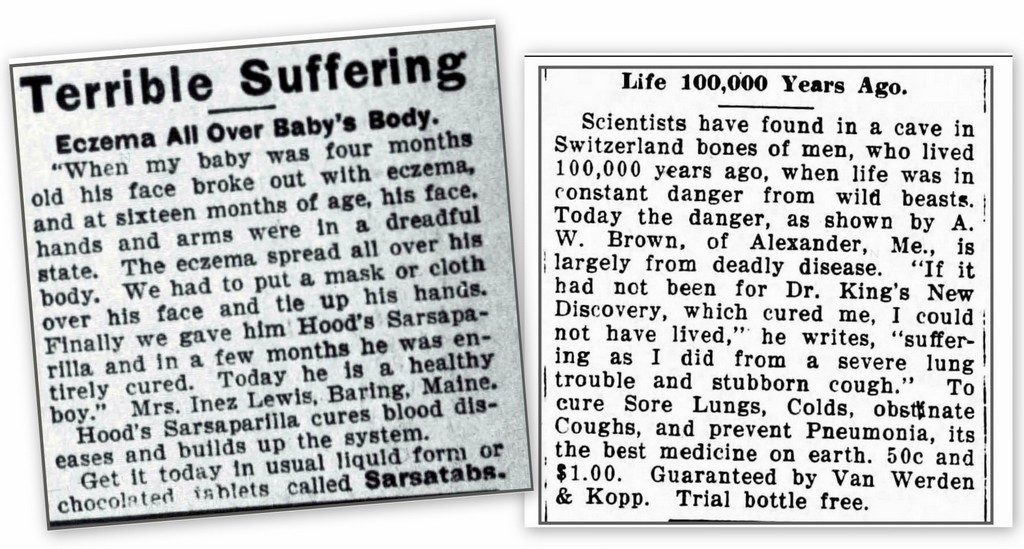
The two local towns most mentioned in national papers in 1911 were Alexander and Baring. The above ads were run thousands of times in national papers. One might question why the companies would choose people from such remote areas as shills for their products but it was common practice and both Inez Lewis and A.W. Brown were actually residents of Baring and Alexander. We presume they received some remuneration and may even have been convinced the products were effective. In fact, nearly all patent medicines were useless at best and often harmful although many were so laced with enough alcohol and/or opium to assure the patient always felt better temporarily.
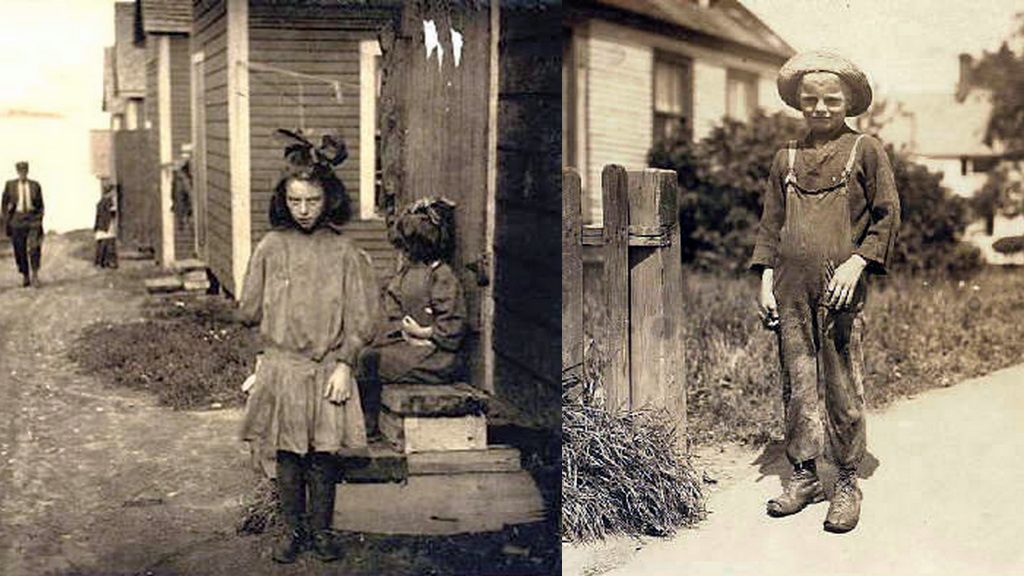
The Eastport Sardine Company plant burned to the ground on October 7, 1911 but this was just one setback in a very bad year for Eastport canning companies. There were few fish and a surfeit of inquiring investigative reporters who were intent on investigating the alleged child labor abuses of the sardine packing industry. Lewis Hines was one such reporter and he was also an experienced photographer. He described the photos above as follows:
“Anna J. Gallant, 9 yrs. old, August 1911, 4 Clark St., Eastport, Maine, 9-year-old cartoner, Seacoast Canning Co., Factory #2. Packs some with her mother. Mother and two sisters work in factory. One sister has made $7 in one day. During the rush season, the women begin work at 7 a.m., and at times work until midnight. Brother works on boats. The family comes from Perry, Me., just for the summer months. Work is very irregular. Nan is already a spoiled child. Location: Eastport, Maine, August 1911, Lewis Hine.
Wilfred Clark, 10 years old, 24 Key St., going home at noon, after cutting five boxes of fish during the morning. Incidentally, he cuts his fingers. See left fore-finger. Two other boys with him had fingers badly cut and healed up. Location: Eastport, August 1911, Lewis Hine.”
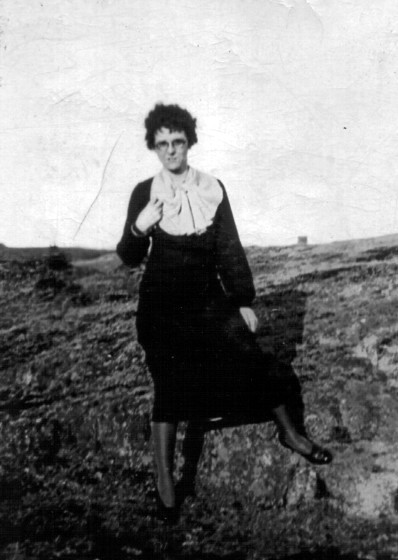
We do have some further history on Anna, who was also known as Nan. She continued to reside in Eastport and in 1918 at 16 eloped with Carroll Sears, also of Eastport. They were apprehended in Bangor and returned to Eastport but married 4 years later and had at least one child, Maurice. She died in Calais at age 34 on September 8, 1936. Carroll moved to Texas and lived until 1970.
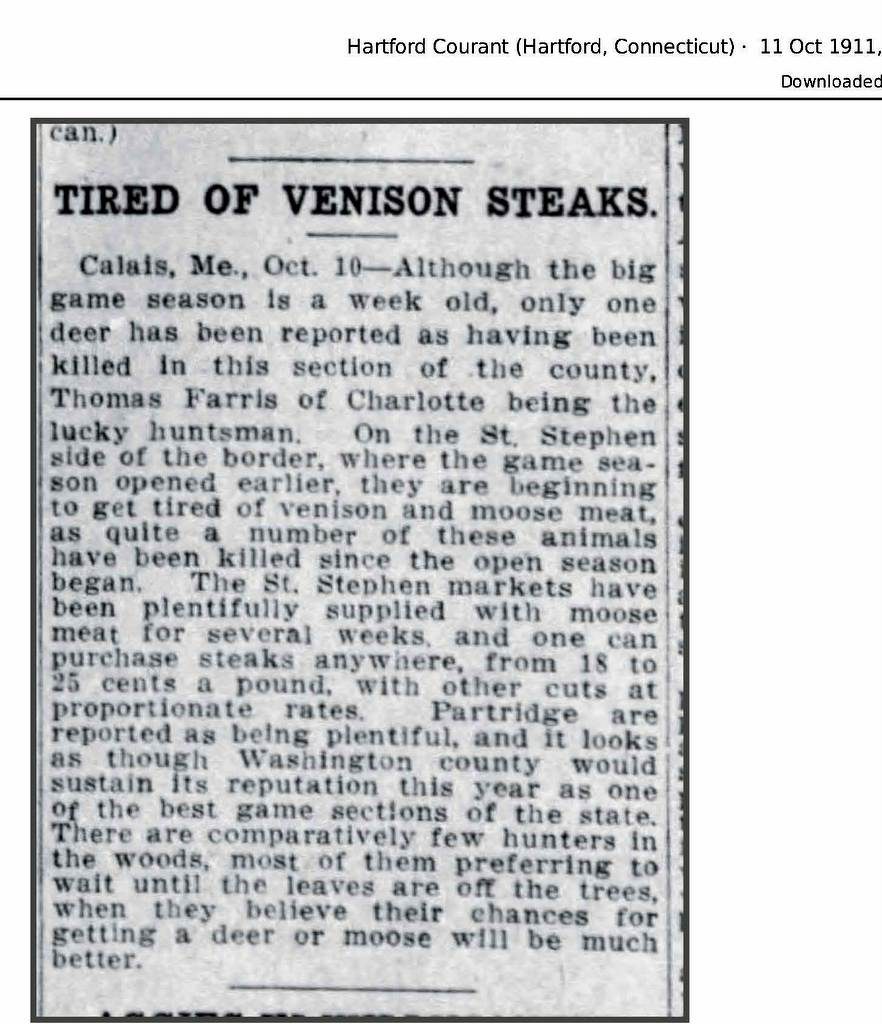
In 1911 our friends across the border were having a good year hunting, but according to the Hartford Courant this was not yet the case in Washington County.
Tired of Venison Hartford Courant 11 Oct 1911
TIRED OF VENISON STEAKS. Calais, Me., Oct. 10 Although the big game season is a week old, only one deer has been reported as having been killed in this section of the county. Thomas Farris of Charlotte being the lucky huntsman. On the St. Stephen side of the border, where the game season opened earlier, they are beginning to get tired of venison and moose meat, as quite a number of these animals have been killed since the open season began. The St. Stephen markets have been plentifully supplied with moose meat for several weeks, and one can purchase steaks anywhere, from 18 to 25 cents a pound, with other cuts at proportionate rates. Partridge are reported as being plentiful, and it looks as though Washington County would sustain its reputation this year as one of the best game sections of the state. There are comparatively few hunters in the woods, most men preferring to wait until the leaves are off the trees when they believe their chances for getting a deer or moose will be much better.
In other local news of 1911 reported by the national papers, a traveler from Rockland Maine to France “ordered sardines with his dinner thinking that in France the choicest variety of that delicacy was to be found”. An inspection of the tin disclosed the sardines were canned in Eastport.
A fellow hitched his horse outside Beckett’s in Calais and after entering the store heard a loud crash on the sidewalk. Outside he found a strong gale had blown his horse over and only with great effort were they able to get the creature upright.
The Tacoma Times reported that Frank Opdyke celebrated his 41st year as the manager of the Central Hotel in Calais. No one of that name ever lived in Calais as far as we know nor was Calais ever home to a Central Hotel.
Finally, some photos and ads from the local fairs in 1911. The Calais Fair was its first at the new fairgrounds, now known as the DiCenzo Athletic Complex on the Avenue.
